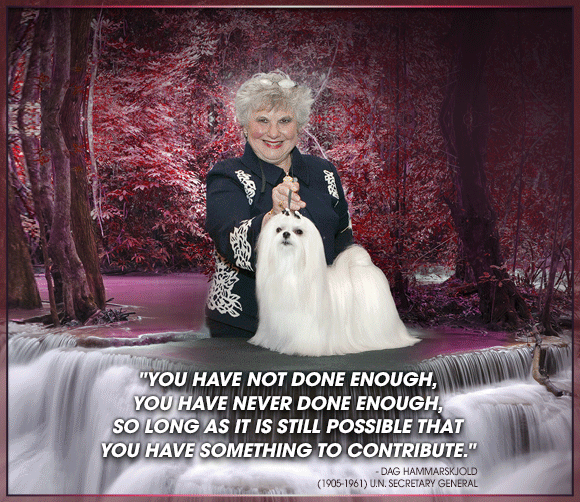Emmons de Mund – Making Borzoi History

By Amy Fernandez
Not long ago, alternate registries were considered an aberrant fad in this well-ordered kennel club universe. Now, AKC seems locked into a long, losing battle to maintain supremacy over a proliferating number of competitors. Therefore, it’s amazing to realize the AKC’s first skirmish on this front was quick and clear. Of course that was way, way back in 1924, and AKC had a unique advantage that time around. Its president, John Emmons de Mund M.D., had already been around the block with AKC and lawsuits.
As part of a group later dubbed the Ashland House Committee, he’d been a lead plaintiff in a notorious legal challenge that redefined AKC’s power structure. Shortly after delegates approved AKC’s charter in November 1906, this group noticed some minor revisions in the articles of incorporation. Most delegates overlooked these unapproved changes and unwittingly voted to grant unlimited, lifetime control to the AKC president and board. When AKC refused to amend this deception, the Ashland House Committee went to war. They filed an injunction to prevent the AKC directors from using the organization’s assets. That maneuver brought business to a screeching halt and catapulted the story to mainstream news. After a yearlong battle, the lawsuit was finally settled by arbitration, thus preventing efforts to transform AKC into a private trust.

A Brooklyn native, born in 1866, de Mund followed his father into the medical profession becoming a nose and throat specialist. He practiced at New York’s Eye and Ear Hospital for 30 years and spent his free time breeding and exhibiting under the Lorraine prefix, which became best-known in Borzoi. In December 1903 he became one of three founding members of Russian Wolfhound Club of America, and served as its first president until 1909.
Borzoi had been in America since the 1880s, but they didn’t take off until J.B. Thomas introduced the first of his Russian imports that year. Their quality instantly attracted interest in the breed. Unfortunately, AKC policies did nothing to encourage that desperately needed support. Although organized national kennel clubs were still rare, AKC required official three-generation pedigrees for imported stock. That was fine since most arrived from Britain with Kennel Club papers, which AKC readily accepted. In contrast, these Russian dogs came with pedigrees from private studbooks. Despite their quality and internationally respected origin, AKC said no dice.
AKC’s illogical policies and dismissive attitude masked its underlying corporate strategy to discourage the introduction of new breeds. As his club’s delegate, de Mund launched the first direct challenge to this wall of indifference at an AKC meeting on May 16, 1916.
In part he said, “Take Chows, Japanese Spaniels, Pekingese dogs, take a Russian Wolfhound, dogs that come from a country where there is no studbook, they may be brought into this country and it is impossible to register their get, there is no studbook in those countries, and that works a great hardship and it would work a great hardship on these breeds of those particular dogs. It would be impossible to register such dogs at any time. A good Chow might be brought from China; there would be no possible way of getting any pedigree on that dog; its get could not be registered under any consideration.
Suppose you bring a Pekingese to this country and go through and win at every show with that dog, beat everything that is here; isn’t that dog entitled to a registration?”
Once again, de Mund won the battle. AKC begrudgingly accepted the Russian imports, and their genetic contribution completely transformed Borzoi type in America. AKC also began to realize that de Mund was not going away and perhaps they could benefit from his leadership skills.
 After retiring from medicine in 1912, de Mund served as a WWI espionage agent for the Department of Justice before becoming an AKC vice president. He became its seventh president in 1923 and over the next decade he navigated the organization through the challenges of The Great Depression. The landmark event during his tenure occurred a year after taking office. He spearheaded their decisive legal victory against an Illinois-based group that had launched a competing registry using AKC’s name and logo.
After retiring from medicine in 1912, de Mund served as a WWI espionage agent for the Department of Justice before becoming an AKC vice president. He became its seventh president in 1923 and over the next decade he navigated the organization through the challenges of The Great Depression. The landmark event during his tenure occurred a year after taking office. He spearheaded their decisive legal victory against an Illinois-based group that had launched a competing registry using AKC’s name and logo.
Congestive heart failure precipitated de Mund’s resignation as AKC president in August 1932. He died at age 67, less than a year later, on November 11, 1933 while at home with his wife and dogs. The following month, the AKC Gazette acknowledged the incalculable contribution of this perpetual troublemaker. “In his connection with The American Kennel Club for 30 years, as a delegate, director, and president, he played a most dominant part in its growth; his energy, foresight, and decisiveness making it a major body in the world of American sport.”

Short URL: https://caninechronicle.com/?p=47267
Comments are closed











